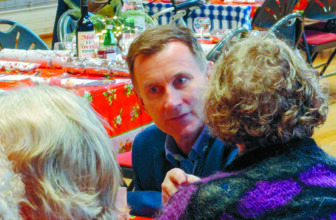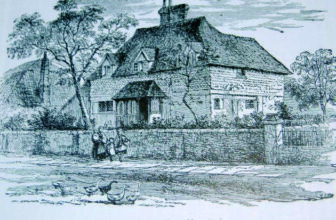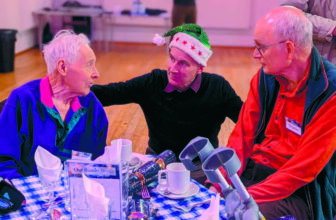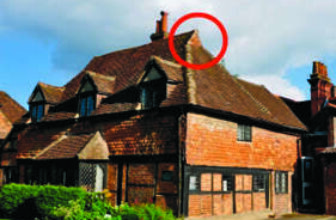Whether you’ve recently moved to England’s largest village, or have lived here all your life, you cannot help but be fascinated by the history of Cranleigh. It’s intriguing for anybody with even the vaguest interest in our country’s roots, but even more so for those of us who love Cranleigh so well. So how much do you know about our treasured village? Here’s some interesting facts that might surprise you:
1. Until the mid-1860s, Cranleigh was spelt ‘Cranley’. However, it was changed by the post office to avoid confusion with nearby Crawley… as if anyone these days could make such a mistake!
2. St Nicolas’ Church is the oldest building in the village, having been erected by the Norman knights of William the Conqueror. The church as it stands today dates back to the mid-14th century, with the first building on the site recorded from about 1170.
3. Speaking of St Nicolas’ Church, did you know that a gargoyle on a pillar inside the church was the inspiration for Lewis Carroll to create the Cheshire Cat?
4. During World War II, two separate bombings hit Cranleigh. The first was dropped on the infant school, but luckily it was on a Sunday morning when no children were present. The Rector, however, in his garden nearby, suffered some injuries from the blast. The second bomb hit the gas works dome, destroying a nearby cottage and killing its occupant.
5. Cranleigh School was originally called ‘The Surrey County School’, and was opened in 1865.
6. Cranleigh appears in Douglas Adams and John Lloyd’s novel ‘The Meaning of Liff’. In the book, experiences that do not yet have a word associated with them are given the names of places. Cranleigh, in the novel, means “a mood of irrational irritation with everyoneand everything”. Make of that what you will…
7. In prehistoric times, the area we now know as Cranleigh was the bed of an inland freshwater lake, and part of the vast Wealden forest, an uninhabit-able, inhospitable environment for human life. How things change!
8. Cranleigh was once a small and isolated agricultural community, until the early 1800s when a turnpike road was built to allow the Prince Regent to travel easily from Windsor to his beloved pavilion in Brighton.
9. Though there’s no supporting evidence, many believe that the prefix ‘Cran’ in ‘Cranleigh’ originated after the Norman conquest. It is believed that, in those days, cranes were bred on farms in the district, to be served as delicacies for Kings.
10. The Cranleigh railway line was erected in 1865, overtaking the once-prosperous canal as the main transport link with neighbouring Horsham and Guildford. The canal closed in 1870, having lost all its business to the railway. The railway was sadly demolished in 1965, with the station giving way to Stocklund Square. If you look behind the shops, however, you can still see some of the old platform levels.
How many of these did you know already? And how many are news to you? Why not drop us an email and let us know!












The was another bomb attack on Cranleigh that was in 1942 when a bomber being chased by English fighters jettisoned his 4 bombs as it flew above the Horsham Road. One bomb caused fatalities to a police house and one failed to detonate (delayed action device possibly) the other two I am unsure about. It was a V1 (doodlebug) that destroyed the infant school while a further V1 hit the Cranleigh Gas Works and one lady was killed.
I was IN the house in Mount Road when the bomb fell and I was a pupil of the infant school when it was hit and my classes were held in the village hall.
Dear Gerald,
I now live in Hobart in Mount Road. I am trying to find out the history of the house and the Bomb.
I would be very interested to hear more about it. If that is at all possible. Thank you
Do you know what year St Cuthberts Mayne school opened, please?
Do you know what year St Cuthberts Mayne school opened, please?